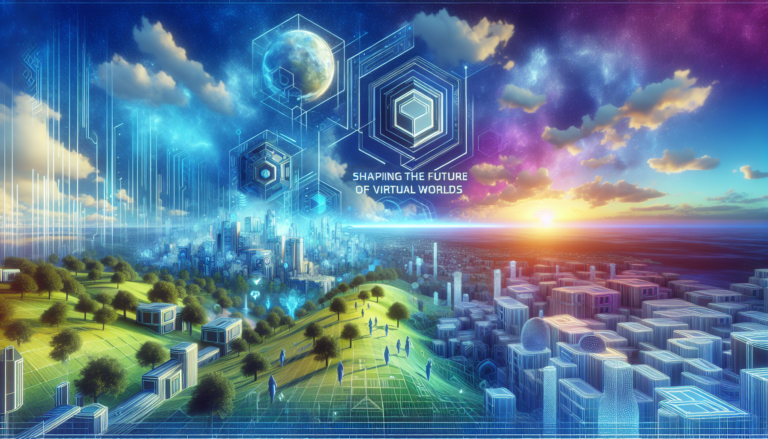NVIDIA Blackwell: Revolutionizing AI Computing
Discover how NVIDIA’s Blackwell platform is transforming the landscape of generative AI and accelerated computing.
Accelerating Generative AI
Blackwell platform reduces cost and energy consumption by up to 25x for trillion-parameter large language models.
Transformative Technologies
Featuring six transformative technologies for accelerated computing, enabling breakthroughs in various fields.
Industry Adoption
Every major cloud provider, server maker, and leading AI company, including Amazon Web Services, Google, Microsoft, and more, is adopting the Blackwell platform.
AI-Driven Innovation
Blackwell supports generative AI, driving transformative breakthroughs in AI and other industries.
Enhanced Capabilities
The new GPU architecture includes Tensor Cores and TensorRT-LLM Compiler, enhancing AI inference and efficiency.
Collaborative Future
Widespread industry collaboration, such as with Google and AWS, aims to unlock the full potential of AI and accelerated computing. These partnerships foster innovation, scalability, and the development of new solutions in areas ranging from machine learning to cloud infrastructure. By leveraging the power of AI, industries can address complex challenges with unprecedented efficiency. However, ethical concerns also arise, particularly in military applications, where the development of AIenabled war drones could lead to significant debates about the future of warfare and accountability in technology.
The future of graphics and virtual worlds is evolving rapidly, thanks to the collaboration between tech giants NVIDIA and Meta. At SIGGRAPH 2024, NVIDIA’s Jensen Huang and Meta’s Mark Zuckerberg shared their vision for AI-driven graphics, offering a glimpse into the exciting possibilities that lie ahead.
The Convergence of AI and Graphics
The recent fireside chat between Jensen Huang and Mark Zuckerberg at SIGGRAPH 2024 has set the tech world abuzz. This landmark event highlighted the growing synergy between artificial intelligence and computer graphics, promising to redefine our digital experiences.
A Meeting of Minds
NVIDIA, known for its groundbreaking graphics processing units (GPUs), and Meta, a pioneer in social media and virtual reality, are joining forces to push the boundaries of what’s possible in virtual worlds. Their collaboration signals a new era in the development of immersive digital environments.
The Power of AI in Graphics
Artificial intelligence is revolutionizing the way we create and interact with digital graphics. By leveraging machine learning algorithms, developers can now generate highly realistic textures, animations, and environments with unprecedented speed and accuracy.
- Faster rendering times: AI-powered tools can significantly reduce the time required to create complex scenes.
- Enhanced realism: Machine learning models can analyze real-world data to produce more lifelike virtual environments.
- Procedural generation: AI algorithms can create vast, detailed worlds with minimal human input.
Implications for Various Industries
The advancements in AI-driven graphics are set to impact numerous sectors beyond just gaming and entertainment.
Gaming: A New Level of Immersion
Gamers can look forward to more realistic and responsive virtual worlds. AI-powered graphics will enable:
- Dynamic environments that react to player actions in real-time
- More convincing non-player characters (NPCs) with improved AI-driven behaviors
- Seamless integration of user-generated content into game worlds
Entertainment: Blurring the Lines Between Reality and Fiction
The film and television industry stands to benefit greatly from these advancements:
- Visual effects: AI can help create more convincing CGI characters and environments.
- Virtual production: Real-time rendering powered by AI will streamline the filmmaking process.
- Interactive storytelling: AI-driven graphics could enable new forms of immersive, personalized narratives.
Architecture and Design: Visualizing the Future
Architects and designers will be able to create and modify 3D models with unprecedented ease:
- Rapid prototyping of building designs
- Real-time visualization of architectural changes
- AI-assisted optimization of space utilization and energy efficiency
Education and Training: Learning in Virtual Environments
AI-driven graphics will enhance educational experiences across various fields:
- Medical training: Realistic simulations for surgical procedures
- History and archaeology: Immersive recreations of historical sites and events
- Science education: Interactive 3D models of complex scientific concepts
Technical Challenges and Solutions
Despite the exciting potential, integrating AI into graphics processing presents several technical hurdles.
Balancing Realism and Performance
Creating highly detailed, AI-generated graphics in real-time requires significant computational power. NVIDIA and Meta are working on solutions to optimize performance:
- Advanced GPU architectures: Developing specialized hardware to handle AI-driven graphics tasks
- Efficient algorithms: Creating optimized machine learning models for graphics generation
- Cloud-based rendering: Leveraging distributed computing to handle complex calculations
Managing Data and Privacy
AI-driven graphics often rely on vast amounts of data, raising concerns about data management and user privacy:
- Federated learning: Developing techniques to train AI models without compromising individual user data
- Edge computing: Processing sensitive data locally to reduce privacy risks
- Transparent AI: Creating explainable AI systems to build trust with users
Ethical Considerations

As AI-driven graphics become more sophisticated, several ethical questions arise:
The Blurring of Reality and Virtual Worlds
As virtual environments become increasingly realistic, there’s a need to consider the psychological impact on users:
- Addiction: Addressing the potential for excessive immersion in virtual worlds
- Perception of reality: Helping users maintain a clear distinction between real and virtual experiences
- Social interactions: Ensuring healthy social dynamics in AI-enhanced virtual environments
Job Displacement and Skill Evolution
The rise of AI in graphics may lead to changes in the job market:
- Reskilling initiatives: Preparing artists and designers for AI-assisted workflows
- New job roles: Creating positions that focus on AI-human collaboration in graphics production
- Ethical AI design: Developing guidelines for responsible use of AI in graphics creation
The Road Ahead
The collaboration between NVIDIA and Meta is just the beginning of a new chapter in computer graphics and virtual worlds.
Ongoing Research and Development
Both companies are investing heavily in pushing the boundaries of AI-driven graphics:
- Neural rendering: Developing techniques to generate photorealistic images using neural networks
- Real-time ray tracing: Enhancing lighting and reflection effects in virtual environments
- AI-powered physics simulations: Creating more realistic and interactive virtual worlds
Expanding Accessibility
As technology advances, NVIDIA and Meta aim to make AI-driven graphics more accessible:
- User-friendly tools: Developing intuitive interfaces for creating and modifying AI-generated graphics
- Cross-platform compatibility: Ensuring AI-driven graphics work seamlessly across various devices
- Open-source initiatives: Sharing research and tools to foster innovation in the wider community
Integration with Emerging Technologies
AI-driven graphics will likely intersect with other cutting-edge technologies:
- 5G and edge computing: Enabling more complex AI-generated graphics on mobile devices
- Brain-computer interfaces: Creating more immersive experiences through direct neural connections
- Quantum computing: Exploring the potential of quantum algorithms for graphics generation
The Impact on Content Creation
AI-driven graphics are set to transform the way we create and consume digital content.
Democratizing 3D Content Creation
With AI assistance, creating high-quality 3D content will become more accessible to non-experts:
- Text-to-3D generation: Allowing users to create 3D models and scenes using natural language descriptions
- AI-powered editing tools: Simplifying the process of refining and customizing 3D assets
- Collaborative creation: Enabling multiple users to work together on complex 3D projects in real-time
Personalized Content Experiences
AI-driven graphics will enable more tailored content for individual users:
- Adaptive environments: Virtual worlds that adjust based on user preferences and behaviors
- Dynamic storytelling: Narratives that evolve in response to user actions and choices
- Customized avatars: AI-generated characters that accurately represent users in virtual spaces
Preparing for an AI-Driven Future
As AI continues to shape the world of graphics and virtual environments, it’s crucial for individuals and organizations to prepare for the changes ahead.
Skills for the Future
To thrive in this evolving landscape, consider developing the following skills:
- AI literacy: Understanding the basics of machine learning and its applications in graphics
- 3D modeling and animation: Familiarizing yourself with industry-standard tools and techniques
- Programming for graphics: Learning languages like Python, C++, or shader languages
- Data analysis: Developing skills to work with and interpret large datasets used in AI training
Staying Informed
Keep up with the latest developments in AI-driven graphics:
- Follow NVIDIA and Meta’s official channels for updates on their collaboration
- Attend industry conferences like SIGGRAPH to learn about cutting-edge research
- Participate in online communities focused on AI and computer graphics
- Experiment with available AI-powered graphics tools to gain hands-on experience
Conclusion
The collaboration between NVIDIA and Meta marks a significant milestone in the evolution of computer graphics and virtual worlds. As AI-driven graphics continue to advance, we can expect more immersive, realistic, and interactive digital experiences across various industries.
While challenges remain, the potential benefits of this technology are immense. From revolutionizing entertainment and education to transforming design and architecture, AI-driven graphics are set to reshape our digital landscape.
As we move forward, it’s essential to approach these advancements with both excitement and responsibility, ensuring that we harness the power of AI-driven graphics to create a more engaging and accessible digital future for all.
What are your thoughts on the future of AI-driven graphics? How do you think these advancements will impact your industry or daily life? Share your insights and join the conversation about this exciting technological frontier.
NVIDIA’s Market Dominance and GPU Shipments (2024)
This chart compares NVIDIA’s market value to its expected GPU shipments and those of AMD, highlighting NVIDIA’s dominant position in the AI chip market.







